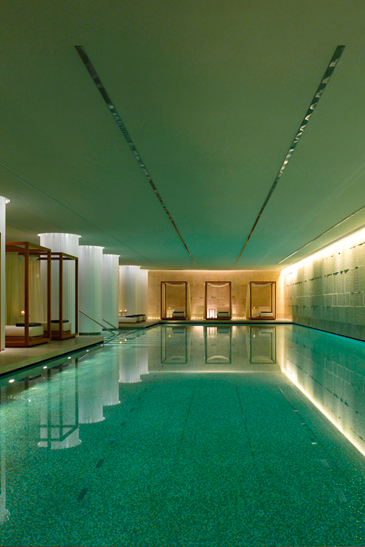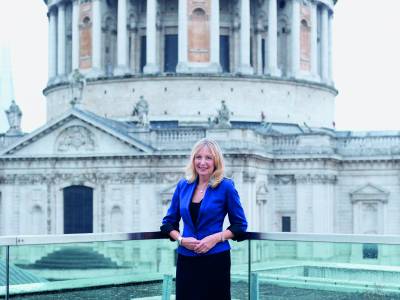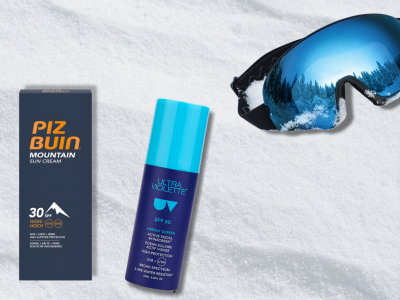I am well aware that I eat too much sugar and this is something that I hope to tackle with the help of another therapist — a hypnotherapist, no less. Among the tests on offer are genetic tests, which tell you if you are more predisposed to absorbing carbohydrate, proteins or fats
and therefore what kind of diet you should be following. Hormonal tests determine whether I have a tendency towards elevated cortisol (the so-called stress hormone) levels — this can lead to issues such as decreased energy levels and increased fat storage around the abdominal area. Moderate- to high-impact exercise can lead to larger levels of cortisol, compared to strength training, yoga or Pilates. Having spent years pounding treadmills, doing military fitness and hot yoga, it is refreshing to hear that I may be able to get fit without pouring with sweat.
Brian Walpole, my softly spoken instructor, tells me that I need to stop thinking about the gym as a weight-loss tool and instead focus on what else I need to get out of it. A recent trapped nerve has been a stark reminder that my upper back muscles are in need of strengthening, so this is an easy target. Otherwise, I am after a bit of weight loss and some toning around my upper arms and hips. I do a dreaded body-fat analysis: it is fine, but I can lose a few per cent. This actually means that as well as exercise, I should boost my green vegetable intake, as apparently the fibre helps with weight loss around this area.
Once I have tried to save my body, it is on to my mind. Susan Hepburn is a hypnotherapist and the model of discretion, but reveals she was up until midnight counselling “a well-known starlet”. We talk about my life and goals, including half a stone in weight loss and she reassures me she isn’t going to put me under and I will always be conscious of her voice. She talks about not eating when I feel hungry and asks me to “eject” the memories I associate with sugar.
I leave feeling uplifted and a week later, although I have caved in a few times at dinner while trying new restaurants (important to test out the skills of the pastry chef), my Lindt supply at home remains untouched. Jemima Sissons
Prices from £20 for treatments
bulgarihotels.com
VIVAMAYR ALTAUSSEE, AUSTRIA
The promise of intestinal cleansing doesn’t fill everyone with joy, but call me weird, it does me. When it comes to gut detox, the sine qua non is the VivaMayr clinic in Lake Worth, Austria, so a chance to sign up to the new VivaMayr Altaussee, near Salzburg, was exciting.
The first thing I notice is that it is more luxurious than its flagship partner. Everything here is spanking new and airy, with natural colours and sleek timber furniture. Perched like a giant chalet next to a green lake, every corner has incredible views over mountains and big skies. The village of Altaussee is chocolate-box pretty — fluffy grass, mountains reflected in the waters of the lake and romantic Heidi houses.
I thud back down to earth during my first meeting with medical supremo Dr Sepp Fegerl. Impossibly youthful, he is sweetness itself while wincing at the scales and tutting at the state of my liver and large intestine. After a round of applied kinesiology, (an alternative medicine technique claiming to diagnose illness or choose treatments by testing muscles for strength) he says that I’m not good with yeast, casein (a protein in cheese) or almonds and mentions the phrase “leaky gut syndrome”. That evening I am given a supper of spelt bread and broth.
I wake up to an 8.30am blood test. Urine and cardio tests and more kinesiology are also on offer. My tests later reveal that I sorely require potassium, vitamin D and magnesium. At the heart of “The Cure” is a way of eating that many find heals issues that go well beyond the gut, including autoimmune diseases and joint problems. Off the menu are booze, sugar and caffeine. On the menu is excellent food: apart from my evening broths with spelt bread, I tuck into cured salmon, eggs, soups of watercress and beetroot, Buffalo mozzarella, poached chicken, cured trout, perch and fennel. Other rules include chewing food between 30 and 50 times, drinking magnesium citrate to encourage gut cleansing, daily abdominal massages and liver compresses.
Everyone has a different plan, although some therapies are more commonly prescribed than others. These include salination air therapy (breathing in salty air, which is said to reduce inflammation), intravenous vitamin infusions, having your nasal passages expunged with a cotton bud, electrolysis foot baths, mud wraps, salt peels and hypoxy-training. For the last of these, you don a mask that deprives and then floods you with oxygen, which builds up the lungs and gently aids deep sleep.
I have a colonic irrigation and try a Watsu session. This form of aquatic bodywork is used for deep relaxation and involves being dragged through the water by a practitioner while I am practically asleep. Body Impedence Analysis has me tied up to electrodes to measure muscle mass, dehydration and fat, after which my personal trainer tells me I need to reduce my body fat from 38% to 21%. In spiroergometry, I sit on a bike, strapped up to an inhaler and a heart monitor, enabling my trainer to analyse how much oxygen I’m able to take in, my fat burning versus carb-burning metabolism and how exhausted I get. Evenings are taken up with dinner, talks on everything from nutrition to joint care, steam room, sauna and early nights.
By the end of the week, I’ve lost two and a half kilos and I look and feel markedly better. Dr Fegerl prescribes Vitamin B, Vitamin D, calcium, potassium and magnesium. I am to embrace soups, fresh herbs, cold pressed oils, millet, spelt, rye, avocado and cooking with ghee, coconut oil and butter instead of olive oil.
I have to avoid raw food for the next three weeks, as well as wholemeal and seeded bread (harder to digest), caffeine (hard on the liver) and sugar (messes with your metabolism). Add in my personal no-nos: casein (in milk, yoghurt and cheese), oats, garlic and yeast, and what you’ve got is a fairly boring dietary existence.
However, a month, later, I’m five kilos lighter and feel as young and happy as the children whose laughter bounces off Altaussee’s peacock-green lake.
Prices from €2500 based on medical treatments and accommodation, not including flights.
vivamayr.com
THE GAINSBOROUGH BATH SPA, UK
Bath’s springs are created by water heated two miles below the earth’s surface and then forced back up, full of dissolved mineral deposits. The Celts associated the springs with the pagan goddess Sulis, then after naming the area Acquae Sulis — “waters of Sulis” — the Romans built bathhouses fed by these thermal springs.
At the new Gainsborough Bath Spa, owner YTL has injected new life into the sedate Bath hotel scene by installing a borehole in Hot Bath Street that will ensure a constant supply of 47° thermal water into its spa. In one step, it has established itself as the owner of the only UK hotel with direct thermal water access.
The spa hotel is named after Thomas Gainsborough, whose portraits captured the great and the good of Bath society in its Georgian heyday. It is housed in three classical-style buildings in honey-hued Bath stone previously used as a hospital and an almshouse, and represents a mammoth restoration by American team Champalimaud Design from a state of near-dereliction.
The 99 rooms and suites were delayed due to the discovery of a trove of 17,000 Roman coins, plus a magnificent mosaic — the latter is now preserved, with a replica built on top; some of the former are displayed in the lobby. A glass occulus at the top of the grand staircase sheds light on a lobby defined by sumptuous marble floors, where greys, taupes and subdued blues predominate. Public spaces and grown-up luxe bedrooms exude a sparse classical minimalism.
The Spa Village takes in 1,300sq metres of thermal pools of different temperatures, an ice room and infrared sauna, traditional sauna and steam room, and a communal atrium, decorated with Romanesque columns. The ritual of a one-hour circuit through the pools and rooms is devised to revive the ancient practice of social bathing and is best attempted with a gaggle of friends, which is how I did it.
Then you can move on to therapies, organic facials, or full-blown body treatments inspired by the group’s Malaysian roots, including Malay herbs and massages, in one of the spa’s 11 treatment rooms.
Aqua therapies include Watsu (which for some reason they have renamed “Freedom”), aqua yoga and even swimming lessons. I have a one-and-a-half-hour body treatment that incorporates a masterful, relaxing Magnesium Wrap. This is a scrub, massage and wrap using magnesium-rich oils to encourage better energy, sleep, circulation, metabolic health and muscle movement.
Then we migrate upstairs to the fine-dining restaurant presided over by Michelin-starred German chef Johann Lafer. Still under the age of 30, he delivers confident, fresh and light Anglo-Asian cuisine. Later, we retire to the Canvas Room, elegant and cosy, to drain the cocktail list dry. After all, this is not too serious a place — like its Roman predecessors, it’s a social spa, made for extrovert fun. Lydia Bell
Rooms from £285 (on a room-only basis);
thegainsboroughbathspa.co.uk







